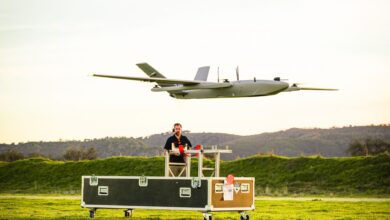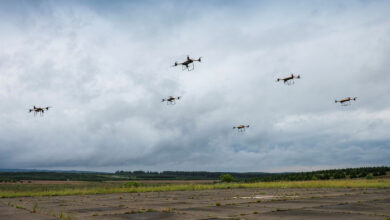BAE to Explore Heavy-Lift Civilian Hybrid Airship for Military Role
BAE Systems and Hybrid Air Vehicles have agreed to jointly explore a long-range hybrid airship system for security and defense applications.
Hybrid’s Airlander 10 will be trialed for new ways of communication and intelligence gathering, according to BAE.
It is an “alternative sustainable and cost-effective solution to air logistics and intelligence surveillance and reconnaissance capabilities,” according to Hybrid.
It complements “today’s networks of air, space, and surface systems.”
Heavy-Lift, High-Endurance Aircraft
The Airlander 10 can stay airborne for up to five days while fitted with a range of payloads such as computing, communications, surveillance, and reconnaissance.
Alternatively, it can carry 10 tons of logistics payload over 2,000 nautical miles (3,704 kilometers/2,301 miles), similar to the Chinook CH-47 helicopter.
Its ability to operate with minimal infrastructure, including on water, “makes it suitable for maritime, coastal and land-based expeditionary warfare in areas where current platforms are challenged,” Hybrid claimed.
Canceled by US Army
The Airlander 10 was previously selected for the US Army’s Long Endurance Multi-Intelligence Vehicle program, featuring a Northrop Grumman sensor suite.
It was originally meant for deployment in Afghanistan in December 2011. However, program delays eliminated that possibility, Defense News reported.
The program was canceled in 2013 after the first flight due to “technical and performance challenges and limitations imposed by constrained resources,” the outlet wrote, citing the US Army.
Remote-Piloting Option
Following the cancellation, the aircraft flew under civilian flight regulations, with its remote piloting feature removed.
A company official told Defense News in 2016 that the remote-piloting capability would be reinstated only for an interested NATO customer.
“Airlander can be thought of as the world’s most efficient large aircraft,” Hybrid Air Vehicles CEO Tom Grundy said.
“This has provided new opportunities for the civil regional transport market and also represents a new path forward to deliver net-zero air power capabilities.”












